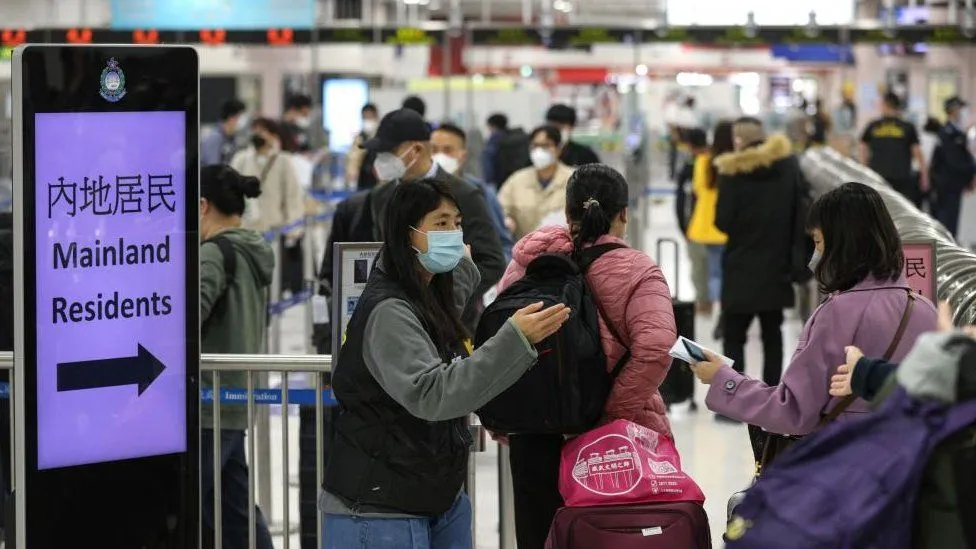
This will certainly help boost the GDP growth rate in Vietnam by more than 2%, besides controlling rising inflation and bringing in the much-needed Chinese tourists to the country by the second half of 2023.
Inflation and uncertainty
During the last week of 2022, China dropped most Covid testing requirements, completely stopped tracking and even stopped the reporting of more infectious cases. The Central Economic Work Conference (CEWC) in China reiterated the government's commitment to focus more on economic growth in 2023. Most people now agree that China's domestic consumption growth in 2023 will increase from 0% in 2022 to about 7% in 2023, with energy consumption increasing by around 10%.
With the reopening of China, investors are interested in Vietnam benefitting from recovery in consumption in China, although there are concerns that reopening of China could increase inflation in Vietnam and also affect global inflation. Many economists believe that the reopening of China will increase inflation, but there is no set consensus on this issue. However, in the short term, economists at the San Francisco FED office said that a rebound in manufacturing in China could help ease supply chain strain that accounts for about half of the current US inflation rate.
The reopening of China will also put pressure on food and energy prices in Vietnam and as some reputable Chinese economists predict, the price of Chinese pork will increase by 20%. In the past, rising food prices in China caused food prices in Vietnam to also rise due to close geographical distance between the two countries.
But there are several factors that are likely to limit the rise in the inflation rate in China in the first half of 2023. The Chinese Government has set mandatory blockade order to give way to voluntary blockade in cities because people are also worried about being infected with Covid as the country's hospitals are overloaded with increase in the number of cases. As a result, economic activity, and pressures on prices in China are both likely to deteriorate and bottom out sometime in the first quarter of 2023. Epidemiologists at the University of Hong Kong predict China's upcoming Covid wave will peak around the end of January 2023.
Boost for Vietnam
It is expected that the reopening of China will boost Vietnam's GDP growth by more than 2% with the return of Chinese tourists in the second half of 2023. Vietnam Airlines has resumed flights to China since 9 December 2022, and Chinese tourists accounted for a third of Vietnam's total tourism industry prior to the Covid pandemic. It is forecast that China's reopening will also lower inflation, even though world inflation has already peaked and is now declining. Therefore, the most important impact of China's reopening on Vietnam is that the number of tourists from China will increase in the second half of 2023.
Foreign tourism contributed to about 10% of Vietnam's GDP before the Covid-19 pandemic, and the number of foreign tourists is on track to grow by 25% this year. It is expected that foreign tourists to Vietnam will reach over 50% of pre-Covid levels in 2023, based on the assumption that Chinese tourists will return in the second half of this year.
FDI benefits
Some investors have concerns that the reopening of China's economy could reduce Vietnam's attractiveness to Foreign Direct Investment (FDI). However, this is unlikely because of two factors, namely, China has lost its attractiveness to several multinational companies for investment and also because of the US-China trade standoff, tensions have escalated significantly in 2022. The country's loss of competitiveness stems from an inconsistent policy in its Covid prevention strategy. Meanwhile, the US-China trade war has prompted multinational companies to move their production bases from China to Vietnam or set up new factories in Vietnam instead of in China.
The evidence lies in that Vietnam's trade surplus with the US has tripled, from USD 25 bln in the nine months of 2018 to USD 75 bln in the nine months of 2022, while the country's trade deficit with China increased from USD 19 bln to USD 52 bln in the same time period. Recently, US President Biden escalated trade tensions with China by announcing an indefinite extension of tariffs on imports from China, along with strict measures. There is also a call to ban Americans from working at some chip factories in China.
The strong structural factors driving FDI inflow into Vietnam appeared before the US-China trade tensions occurred. According to a survey by the Japan Trade Promotion Organization (JETRO) as well as many other organizations, the factory wages in Vietnam are only two-thirds that of China, and the quality of the Vietnamese workforce is equivalent to that in China. In addition, Japan, and South Korea, which account for more than half of Vietnam's FDI inflow, are both facing serious demographic problems and other economic dilemmas, forcing companies in both countries to make their investments abroad for long term future.




















